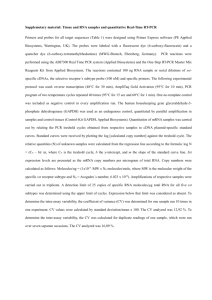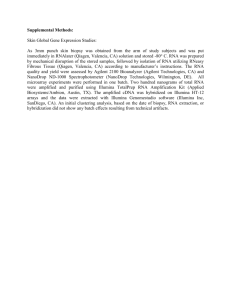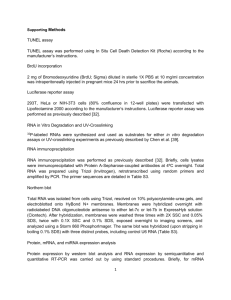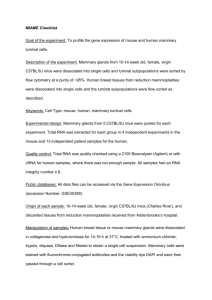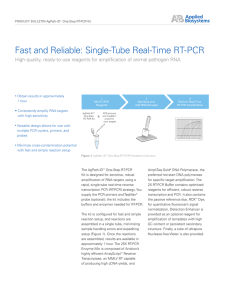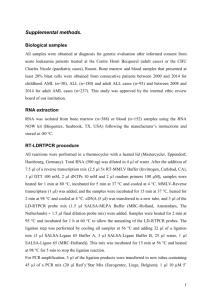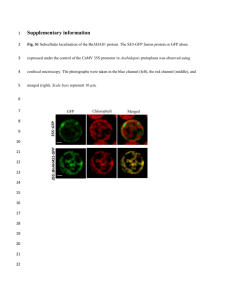Supplementary Information (doc 52K)
advertisement
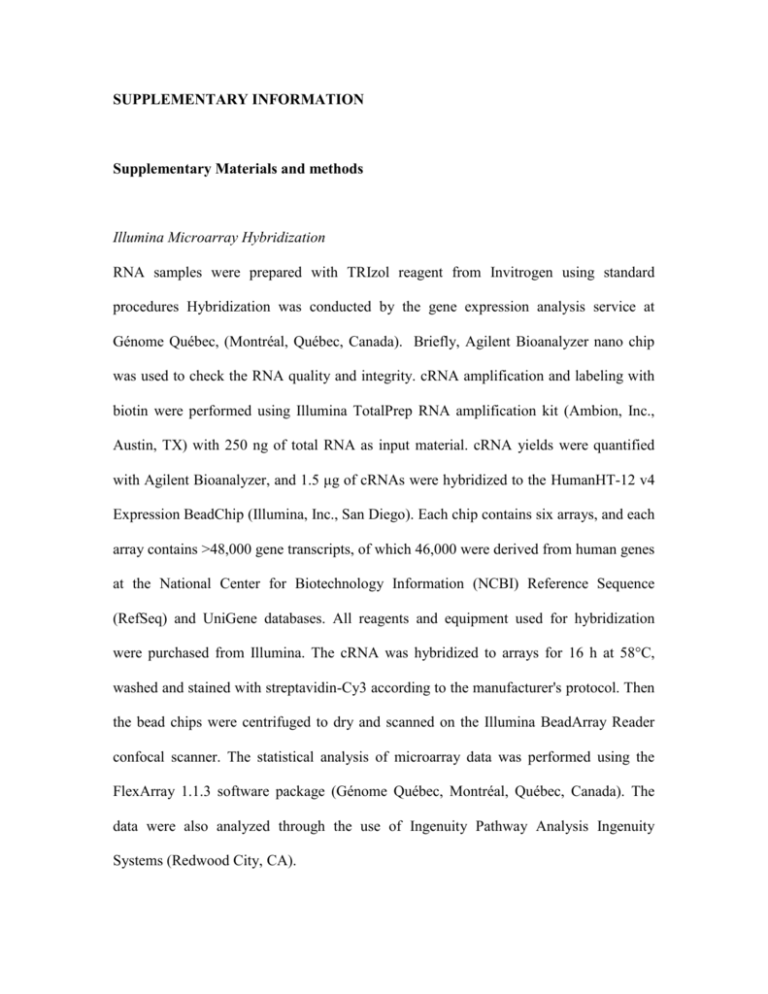
SUPPLEMENTARY INFORMATION Supplementary Materials and methods Illumina Microarray Hybridization RNA samples were prepared with TRIzol reagent from Invitrogen using standard procedures Hybridization was conducted by the gene expression analysis service at Génome Québec, (Montréal, Québec, Canada). Briefly, Agilent Bioanalyzer nano chip was used to check the RNA quality and integrity. cRNA amplification and labeling with biotin were performed using Illumina TotalPrep RNA amplification kit (Ambion, Inc., Austin, TX) with 250 ng of total RNA as input material. cRNA yields were quantified with Agilent Bioanalyzer, and 1.5 μg of cRNAs were hybridized to the HumanHT-12 v4 Expression BeadChip (Illumina, Inc., San Diego). Each chip contains six arrays, and each array contains >48,000 gene transcripts, of which 46,000 were derived from human genes at the National Center for Biotechnology Information (NCBI) Reference Sequence (RefSeq) and UniGene databases. All reagents and equipment used for hybridization were purchased from Illumina. The cRNA was hybridized to arrays for 16 h at 58°C, washed and stained with streptavidin-Cy3 according to the manufacturer's protocol. Then the bead chips were centrifuged to dry and scanned on the Illumina BeadArray Reader confocal scanner. The statistical analysis of microarray data was performed using the FlexArray 1.1.3 software package (Génome Québec, Montréal, Québec, Canada). The data were also analyzed through the use of Ingenuity Pathway Analysis Ingenuity Systems (Redwood City, CA). RT-PCR Total RNA was isolated by Trizol (Invitrogen), according to the manufacturer’s instructions. The Protoscript M-MuLV Taq RT-PCR Kit (New England Biolabs, Ipswich, MA, USA) was used to synthesize cDNA. From 0.5 ug of total RNA, cDNA was synthesized using 10 U of M-MuLV reverse transcriptase, 2.5 mmol/l of deoxyribonucleotide triphosphate mixture, and 100 pmol of Oligo d(T)23VN. The primer d(T)23VN, RNA, and deoxyribonucleotide triphosphate mixture were combined and heated for 5 min at 70°C. Following this step, the reverse transcriptase, buffer and RNase inhibitor were added and the mixture was heated at 42°C for 1 hour. The enzyme was inactivated at 80°C for 5 min. For reverse transcription PCR analysis in an intronspanning manner, 1ul of cDNA was amplified using the aforementioned Protoscript Kit and the C1000 Thermal Cycler (Bio-Rad). The cycling program run was 95°C for 2 min, followed by 25 PCR cycles (95°C for 30s, 55-65°C for 30s, 72°C for 45s) and a final extension for 5 min at 72°C. All RT-PCR reactions included a 327-bp GAPDH fragment which was amplified using the GAPDH primers supplied in the ProtoScript® M-MuLV Taq RT-PCR Kit (New England Biolabs, Ipswich, MA, USA). Primer sequences used for PCR are in Supplementary Table S3. Supplementary Figure legends Fig. S1. Semi-quantitative RT-PCR analysis to validate the effect of BRK on the transcription of some of the genes identified by microarray analysis. Semi-quantitative RT-PCR was performed for the indicated differentially expressed genes with the cDNAs from HEK 293 cells stably expressing GFP, GFP-BRK-WT and GFP-BRK-YF. The reactions were conducted using the ProtoScript® M-MuLV Taq RT-PCR Kit as described by the manufacturer. The primers for GAPDH were supplied by the manufacturer and were used for internal control reactions.




